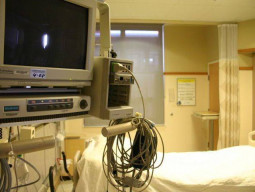
One forecast places the value of the fitness club market around €3.9 billion for 2022. But even with gym membership on the rise, statistics from a survey by the Kantar Public found that more than 33 per cent of UK residents never exercise costing the economy direct and indirect costs amounting to around €8.2 billion. The figure includes the cost of treating diseases like obesity and the cost to businesses due to employees missing work due to sickness.
In the past, scientists have recommended the “150-minute” per week of moderate-intensity as the average time of exercise required for most people to see a difference in their cholesterol levels, body fat percentages, sleep quality, bone density, and holding back the ageing process. The number has time and again been linked to an increase in lifespan by three to four years.
The number is based on research spanning 40 years and has been recommended by Public Health England as well as the Center for Disease control and prevention in the US.
“We did a study where we took skin biopsies, and in people who exercised regularly we found that the skin looked 20 years younger,” says Mark Tarnopolsky, professor of paediatrics and medicine at McMaster University in Hamilton, Ontario. “And when we took sedentary older adults and trained them for three months with this amount of exercise, there was a youthening of the skin by about 20 years.”
In an effort to induce more people to exercise, researchers have been investigating exercise regimens that provide the same benefit but in briefer stretches of time. In the realm of cardio, Tabata and HIIT (high-intensity interval training) programmes are gaining speed.
“There’s good evidence that if you increase the intensity, workouts which involve just a few minutes of exercise in total can still be extremely effective,” says Martin Gibala, professor of kinesiology at McMaster University, Ontario.
An extreme form of high-intensity training is the one-minute workout which involves 20-second bursts of exertion, a break of one to two minutes, a three-minute warm-up and a two-minute cool-down.
Professor Gibala says that this can have the same effect as a half hour jog in the park, because it is conducted at up to 90% of your maximum heart rate - different for each individual based on age.
But institutes like Public Health England have refrained from recommending HIIT because of reports of a disease called rhabdomyolysis among HIIT beginners. People suffering from this condition have their intracellular muscle constituents break down, which then leak into the bloodstream and cause pain and potential kidney damage if ignored.
Sugar rush: Too much sweet can be bitter for health
Public Health England instead recommends a 75-minute vigorous intensity exercise like a brisk jog or cycling as an alternative to the traditional 150-minute recommendation.
Equally noteworthy is the observation that working on flexibility and muscle strength becomes more important as we age.
“As you get older, you’re naturally losing connections between the nerves and the muscles, leading to weakness, and eventually lack of independence, and increased risk of falling,” Gottschall says. “But studies have shown that strength training such as cycling on an exercise bike with high resistance can help negate this, and even improve other things, such as bone density.”
“Keeping all the balls in the air does take a lot more time as you get older,” he says. “Just doing cardio alone doesn’t help with strength, which is continuously declining throughout middle and old age. Flexibility is more important to work on as you get older because there’s increased collagen deposition in muscle, which makes you feel stiffer; so stretching keeps your joints healthy.”
Self-employment improves mental health: study
It was also found that the minimum requirement for exercise varies from person to person, and depends on genes as well as age. People having a family history of type 2 diabetes or cardiovascular disease were recommended a greater minimum exercise requirement than those without such a history.
According to Tarnopolsky, “As a rough approximation, these people should probably be exercising 50per cent more than the minimum recommendation.”
“Blood sugar is greatly impacted by daily bouts of physical activity, so a type 2 diabetic really should be doing cardio every day,” says Gary Liguori, professor of health sciences at the University of Rhode Island. “Blood sugar is absorbed by the muscles, so strength training has benefits too, because if you can increase muscle surface area, that allows it to clear so much more sugar from the blood.”
Responding to the challenge of getting people to hit the minimum requirements, Tarnopolsky said that it just meant that our perspective on exercise needs to change.
“We have to start thinking of exercise as a drug,” he says. “Therefore, if you have a strong family history, which indicates a genetic risk factor or something happens which proves you have that disease, you should make the time. Even if you exercised for half an hour every single day for seven days a week, that’s a tiny fraction of 16 waking hours. And after all, time doesn’t really matter when you’re dead.”
















1714131462-0/WhatsApp-Image-2024-04-26-at-4-21-45-PM-(1)1714131462-0-270x192.webp)













1714024018-0/ModiLara-(1)1714024018-0-270x192.webp)









COMMENTS
Comments are moderated and generally will be posted if they are on-topic and not abusive.
For more information, please see our Comments FAQ